- Facilities at a Glance
- All Facilities
- Material
- Earth System and Environment
- Engineering Technology
- Space and Astronomy
- Particle and Nuclear Physics
- Energy
- Biology
- 1
- 2
- 3
Hefei Synchrotron Radiation Facility
Create Proposal Hefei Synchrotron Radiation Facility is the first dedicated synchrotron radiation facility in China, which locates on the West Campus of the University of Science and Technology of China (USTC), in Hefei, Anhui Province.
It is one of the key issues of China’s investments on large-scale scientific research facilities. Its construction began on Nov. 20, 1984, and completed with a national review in Dec. 1991. After Phase II Project from 1999 to 2004 and Upgrading from 2012 to 2014, NSRL now owns a fully upgraded soft X-ray synchrotron radiation facility. The synchrotron is close to the 3rd generation level, and the facility is now with five ready-to-use endstations: combustion and flame, soft X-ray microscopy, catalysis and surface science, angle resolved photo-emission spectroscopy, atomic and molecular physics. It has six other beamlines now open for future endstations.
The superior radiation, together with the well-designed beamlines and endstations, allow national-wide scientists to perform cutting edge scientific experiments, which are otherwise impossible in their home laboratories. The researches cover physics, chemistry, life sciences, material sciences, surface sciences, metrology, medicine, microscopy, instrumentation, and so on.
As a government supported, user-oriented large-scale scientific facility, we enthusiastically welcome researchers from various fields coming to carry out your state-of-the-art research with us.
Equipment
-
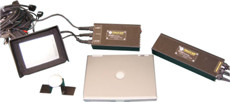
Angle-resolved Photoemission Spectroscopy
ARPES beamline can study electronic structures of soilds. The endstation is equipped with VG-Scienta R4000 electron analyzer, five-dimensional manipulator, molecular beam epitaxy (MBE) chamber and low-energy electron diffraction (LEED),etc. The overall energy resolution is better than 10meV,and the temperature is 7K-350K. The photon energy range is 5eV-40eV, and the beam spot size is 0.8mm×0.4mm. Various photon polarizations (horizontal, vertical, circular) are available.
-
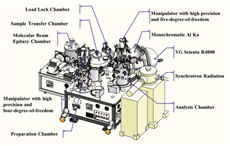
Catalysis and Surface Science
Catalysis and Surface Science beamline (BL11U) is connected to an undulator and equipped with two gratings that offer soft X-rays from 20 to 600 eV with a typical photon flux of 5×1010 photons/s and a resolution (E/ΔE) better than 105 at 29 eV. This beamline was set up primarily for the high-resolution X-ray Photoelectron Spectroscopy (XPS), Ultraviolet Photoelectron Spectroscopy (UPS) and Near Edge X-Ray Absorption Fine Structure spectroscopy, (NEXAFS). This endstation is comprised of four ultrahigh vacuum (UHV) chambers including analysis chamber, preparation chamber, molecular beam epitaxy (MBE) chamber, and a radial distribution chamber. The analysis chamber is equipped with a VG Scienta R4000 analyzer, a monochromatic Al Ka X-ray source, a UV light source, low energy electron diffraction (LEED), a flood electron gun, and a manipulator with high precision and five-degree-of-freedom. The preparation chamber comprises an ion gun, a quartz crystal microbalance (QCM), a residual gas analyzer, a manipulator with high precision and four-degree-of-freedom, and several evaporators. The MBE chamber houses a QCM, several evaporators and a manipulator with two-degree-of-freedom.
-
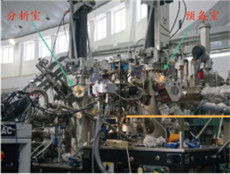
Photoemission
Photoemission beamline is a Dragon type bending magnetic beamline with three grating covers the energy from 60 to 1000eV. The energy resolution is about 1000 and the flux is about 10E10 photons/sec. The Photoemission station have four chamble, analyser chamble(ANA), prepairing chamble(PREP), Lordlock(LL) and a High pressure reaction chamble(REAC).the ANA is equiped with Scienta R3000 analyser, a Specs Dual anode X-ray gun , a Prevac flood gun, a Specs ErLEED, The PREP is equiped with a sputtering gun and High and medium tempeerature evaporator. In both ANA and PREP the sample can be heated to 1400℃ and cooled to -150℃ according to the sample holder type. We can do experiments of SRPES, XPS, UPS, NEXAFS, etc. Our special equiment is the High pressure reaction chamble which can dose 4 ways of gas up tomore than 1MPa and heated to 650℃ and after reaction tranfer to ANA chamble to od experiment without explore to air.
-

Infrared spectroscopy and microspectroscopy
The infrared beamline provides users infrared spectroscopy measurement from far-infrared to near-infrared, and diffraction limited spatial resolution microspectroscopy and imaging in mid-infrared range. The main research field include:(1)Biology and biomedicine : chemical imaging of single cell and tissues, protein secondary structure; (2) Physics: low energy electrodynamics of correlated electron system; Metal-insulator transition (3) Material science: optical property of semiconductor, dielectric and superconductor; vibrational spectroscopy of organic molecule; structure of polymer;(4)Chemistry: structural and chemical characterization of catalysis;(5)Geology: component and structure of fluid inclusion in mineral.
-
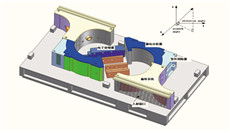
Spectral Radiation Standard and Metrology
Synchrotron radiation (SR) is an invaluable metrology light source especial in the region of EUV and soft X-ray. The most advantage of Synchrotron radiation metrology is its continuous spectral. Spectral Radiation Standard and Metral beamline provides users continuous spectroscopy from 5-140nm region.This beamline comes from bend magnet, and naturally splits into two branchs. One branch is Spectral Radiation Standard and Metrology Beamline(BL08B). BL08B consists of front toroidal mirror (TM1) , entrance slit (S1) , spherical grating monochromator ( SGM) , exit slit (S2 ), back toroidal mirror(TM2), and reflectometer. SGM consists of three Laminar spherical grating (SG), cover the region of wavelength 5-140nm. The Sample Stage can rotate180 degree, and detector (Detec) can rotate 360 degree around Sample Stage. The filter can be fixed in front of reflectometer.BL08B is ready for optical element reflectivity, transmissivity and efficiency measurement; gas absorption cross section measurement; standard and transfer detector calibration.
-

Combustion and Flame
The combustion endstation is dedicated to the studies of combustion processes and mechanisms. This endstation combines the tunable synchrotron vacuum ultraviolet (VUV) light with a homemade combustion mass spectrometer, where most of the combustion products including unstable radicals and isomeric structures can be distinguished unambiguously, extending our knowledge of intermediate pools and provide more precise targets for quantum chemical calculations of reaction channels. In additioon, come other combustion-related processes inclcuding fuel pyrolysis and low temperature oxidation can also be studied.
-
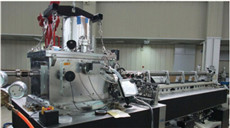
Soft X-ray microscopy
The full-field Transmission soft X-ray Microscopy beamline BL07W at NSRL is devoted to cryo nano-tomography for biological applications in the water window (284 - 530 eV ) and for imaging of nanomaterials from 200 to 2500 eV. An ellipsoidal capillary used as condense to focus monochromatic light onto the sample. Two Ni zone plate (ZP) lenses made by Zeiss with 40 nm and 25 nm outer most zone widths, respectively, are available, giving spatial resolution in 2D of down to 40 nm and 30 nm, respectively. Hydrated biological specimens had been imaged in the water window photon energy range without chemical fixation, dehydration, chemical staining and physical sectioning. In addition, other applications such as nanomaterials imaging had been demonstrated.
-

XMCD-b
The XMCD endstation, in connection with the BL12B-a beamline, is designed to study magnetic films and bulk samples consisting of 3d states of transition metals (TM) or the 4f states of some rare earth (RE) elements by soft x-ray magnetic circular dichroism spectrocscopy.The beamline covers a photon energy range of 100-1000 eV with a normal resolution of 1000@1000eV. The flux is on the order of 108 phsc @1000eV and the beam size at the sample position is about 2mm (h) x1mm (v). The right- or left-circularity polarized soft x rays selected from below or above the horizontal beam orbit are produced by a bending magnet and monochromized with a varied line-spacing plane grating (VLSPG) monochromator and refocused by a toroidal mirror. Three detection options including the sample drain current (TEY), partial electron yield (PEY) and total fluorescent yield (TFY) can be met for different experiments. Two types of electromagnets including dipole and octupole will be equipped for XMCD and XMLD measurements in one year. The theoretical peak field intensity is 1 Tesla.
-

XMCD-a
The XMCD endstation, in connection with the BL12B-a beamline, is designed to study magnetic films and bulk samples consisting of 3d states of transition metals (TM) or the 4f states of some rare earth (RE) elements by soft x-ray magnetic circular dichroism spectrocscopy.The beamline covers a photon energy range of 100-1000 eV with a normal resolution of 1000@1000eV. The flux is on the order of 108 phsc @1000eV and the beam size at the sample position is about 2mm (h) x1mm (v). The right- or left-circularity polarized soft x rays selected from below or above the horizontal beam orbit are produced by a bending magnet and monochromized with a varied line-spacing plane grating (VLSPG) monochromator and refocused by a toroidal mirror. Three detection options including the sample drain current (TEY), partial electron yield (PEY) and total fluorescent yield (TFY) can be met for different experiments. Two types of electromagnets including dipole and octupole will be equipped for XMCD and XMLD measurements in one year. The theoretical peak field intensity is 1 Tesla.
-
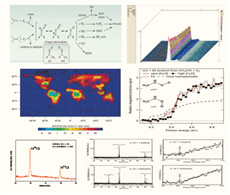
Atomic & molecular Physics
The beamline provides VUV source from the undulator with an energy range of 7.5 to 124 eV to investigating the photoionization spectroscopy and dynamics of atoms, molecules, radicals, clusters and aerosols. The endstations include: (1) Main experimental chamber with supersonic molecular beam and RTOF mass spectrometer. (2) SR photoionization aerosol mass spectrometer with TSI differential mobility analyzer and condensation particle counter. (3) Laser photolysis -- radical reactor for atmospheric radical reaction kinetics. (4) Threshold photoelectron-photoion coincidence spectrometer with velocity imaging. (5) Multi-stage photoionization chamber. The scientific programs cover atomic & molecular physics, cluster science, reaction dynamics and kinetics, material science, atmospheric environment chemistry, biological chemistry and interstellar chemistry.
-
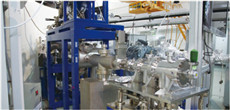
Mass spectrometry
The mass spectrometry endstation uses the VUV light from a bending magnet as the ionization source (6-11.6 eV), and several high-resolution mass spectrometer as detectors. This endstation is dedicated to the studies of: 1) in-situ detection of gas-phase desorbed radicals and stable products in heterogeneous catalytic reactions. 2) VUV light-induced activeation and dissociation of proteins and peptides, which is complementary to the results from CID and ECD. 3) photoionization mass spectrometry imaging of living tissues with 100 um lateral resolution.
NOTICE
-
Call for Proposals for HEPS Phase II Beamlines May 23,2022





